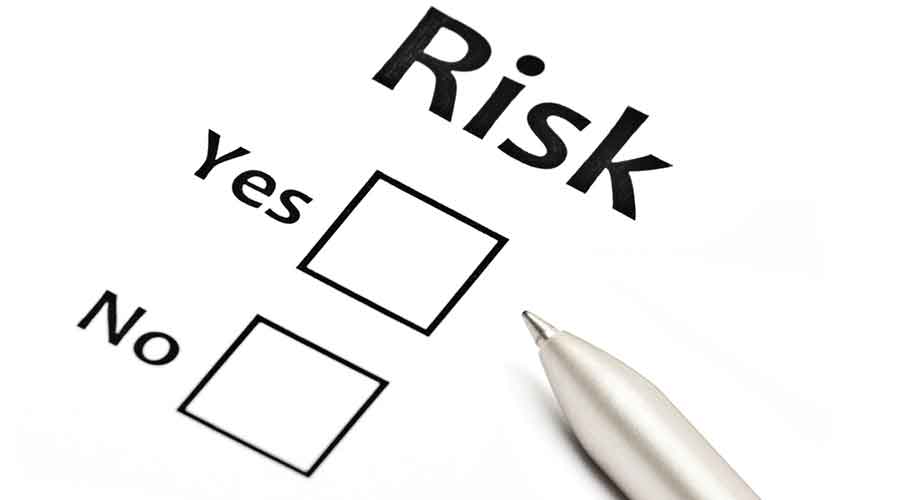Risk, as identified by the securities regulator for the mutual fund industry, seems somewhat like separation these days — there are six degrees of it. An altogether new category has been added to “risk-o-meter”, the pictorial marker that is used to tab a fund on the basis of its risk-level.
Product labelling for mutual fund investors now has “very high risk” as a distinct identifier. In ascending order, the five existing levels of risk are: low, low to moderate, moderate, moderately high and high.
The latest inclusion, however, has jimmied a rather rusty doorknob, bringing certain elementary issues to the fore. In a highly commoditised world of financial products, these issues concern all investors, big and small.
But, first, if you please, a bit about the risk-o-meter. Introduced by Sebi a few years ago, this is a well-intentioned initiative aimed at enabling investors to take meaningful decisions. To invest (or to abstain from investing) in complex products such as mutual funds, there needs to be a clear understanding of the risks involved, something that the regulatory agency wants to inculcate. Product labelling on the basis of risk, it is felt, needs to be as perfect as possible.
The system today
An asset management company is required to assign a risk-level to a new fund right at the time of its launch. This is depicted in the risk-o-meter, which has to be evaluated on a regular basis and divulged as part of the overall portfolio disclosure. The product label has to be displayed prominently in all critical documents (such as Key Information Memorandum), which the investing public is expected to comprehend.
So, a liquid fund is typically branded “low” on the risk scale, while a mid-cap equity fund bears the “high” tag. In both cases, the indicator dutifully marks the appropriate slot; in essence, it underscores an age-old dictum — the higher the risk, the higher is the potential return. This inevitable risk-return metric is a vital concept, an understanding of which is an absolute necessity in today’s world.
Notice the difference
Let me dwell a bit more on the idea and its application in real life. It is generally felt that equity is an extremely high-risk asset class. It is subject to great volatility, there can be absolutely no assurances of any kind of performance from the stock market.
Debt, on the other hand, is a lot more sedate. There is instability here too, and debt allocations are not without attendant risks. Nevertheless, at certain levels, returns from the debt market are not so unpredictable. Its seemingly predictable feature, in fact, adds to its core appeal. Specific categories of debt funds draw their basic strength from their evergreen nature, and their impressive year-round sales figures are often a direct consequence of the same.
It can be generally inferred, therefore, that equity is a high-risk category of assets, while debt is its low-risk counterpart. That is of course a sweeping statement, as there are multiple sub-classifications at both ends of the spectrum. Such sub-classifications, therefore, require differentiated labels.
An investor, for instance, must understand that equity funds do bear all sorts of tags, including diversified, thematic and sectoral. It is also important to realise that a diversified equity fund can be somewhat less risky, while a sector fund will be located somewhere higher on the risk scale because of its inherent nature.
The risk-o-meter really cannot capture such fine differentiation in just a single pictorial format; yet it does give a preliminary idea of a fund’s risk content in a friendly manner.
Ask questions
Irrespective of what the visuals may suggest, investors would do well to ask pertinent questions before actually allocating resources to Fund A while staying away from Fund B.
The choice — here, it doesn’t really matter what assets it holds in its portfolio — must match their risk profile. Is Fund A a perfect fit for me? Or should I actually choose Fund B instead?
These posers are extremely critical when there is great diversity of products. Selection is everything.
Decide on the degree
Risk analysis in this context deals with the degree of risk — a comparative benchmarking that must be done on the basis of a fund’s core characteristics, investment objectives, and the universe of securities from where it draws up its portfolio.
In real life, a comparative degree such as this is not an absolute element, nor is it iron-clad in any way. It is actually a matter of perception, which is determined by an investor’s risk appetite. What is risky for you may not be so risky for me; each investor has a unique set of opportunities and challenges.
However, the application of the new-look, extended risk-o-meter is still quite necessary. It is a useful guide for all. It helps us understand that an equity fund is riskier by far than a debt fund, a sector fund is riskier than a diversified fund, a low-duration debt fund is a lot less risky when compared to a credit risk fund.
As things stand, there are quite a few standard classifications of funds, each with risks of its own. I have created a roster of debt and equity funds as well as their risks. These are grouped according to risk in an ascending order, numbered 1 to 4 on the debt side where product differentiation is extremely sharp.
At the lowest rung are overnight, liquid, ultra short duration funds and so on. At the highest stratum are dynamic bond and credit risk funds. On the equity side, I have worked out another set of four groups, again on the basis of their salient features.
You will notice, only the most relevant categories have been chosen. I have kept the likes of gilt funds, arbitrage funds and gold funds out of its ambit. A whole bunch of hybrid categories, as well as miscellaneous others like asset allocation funds, have not been considered.
The writer is director, Wishlist Capital Advisors











